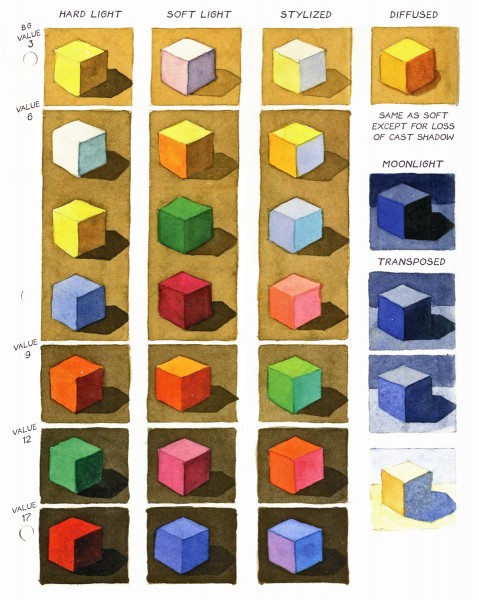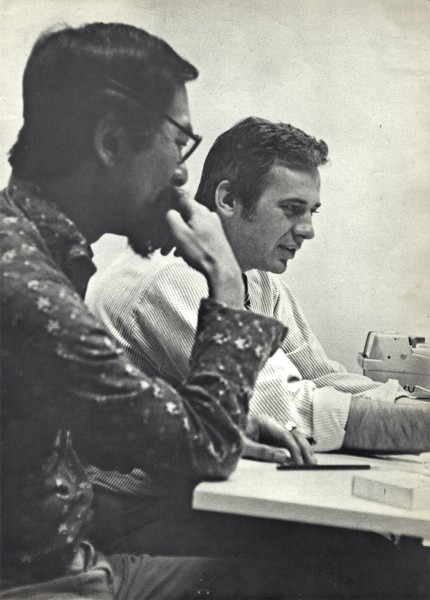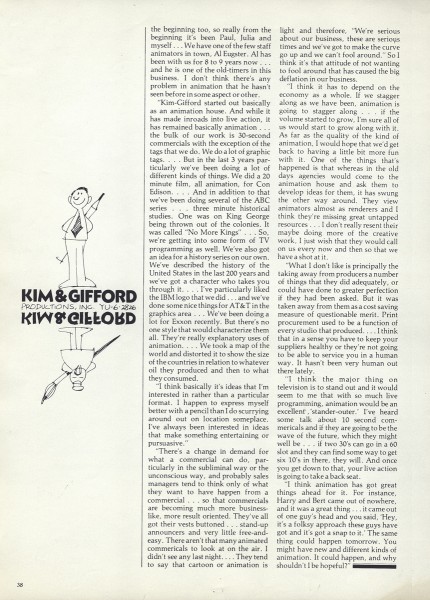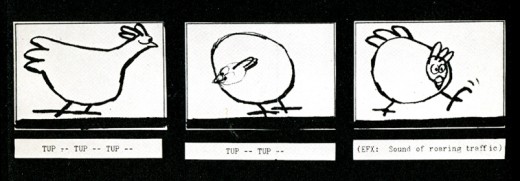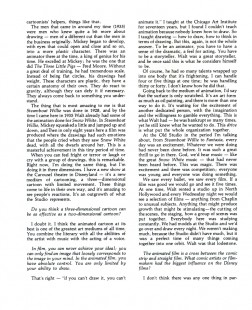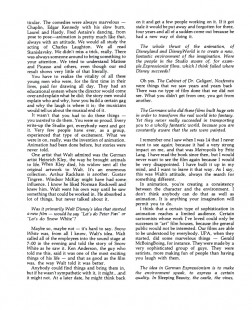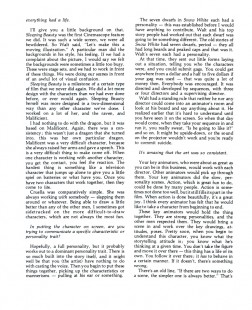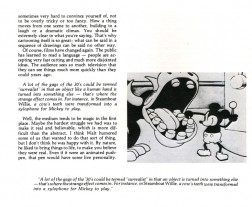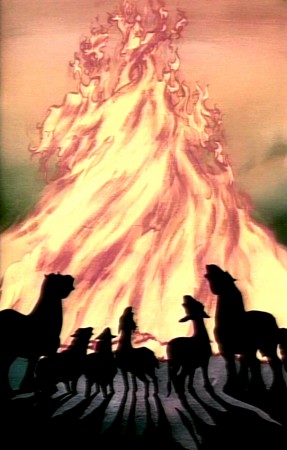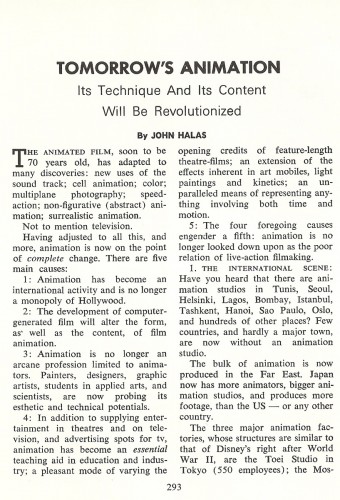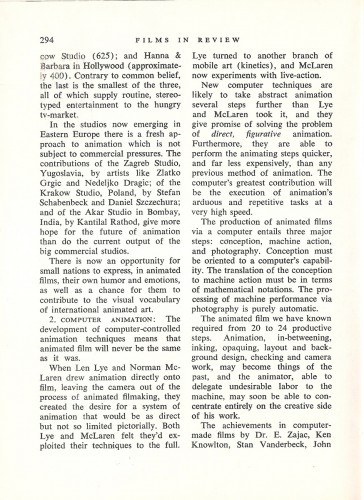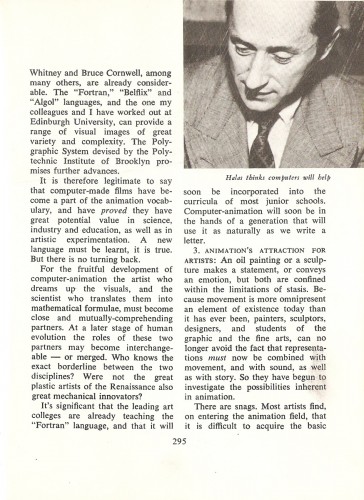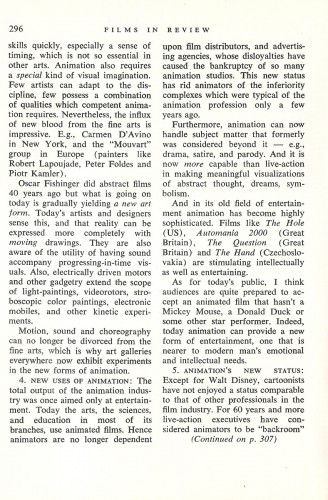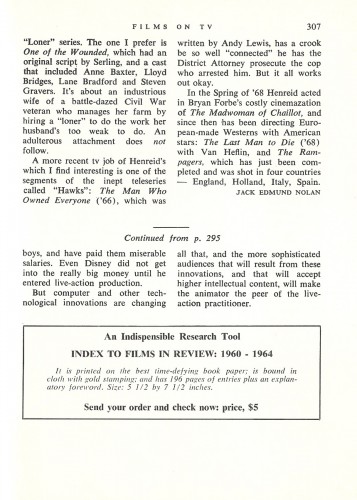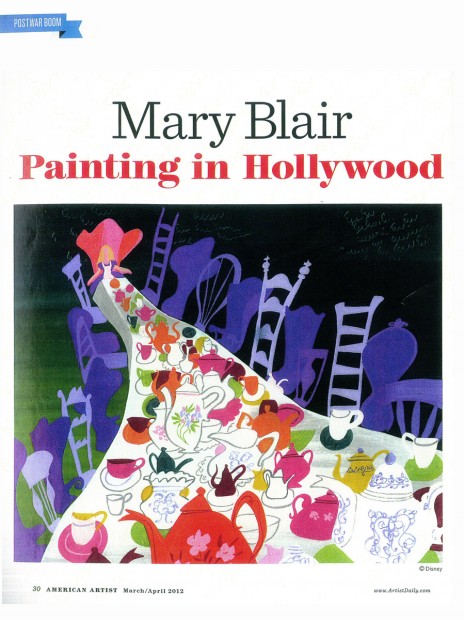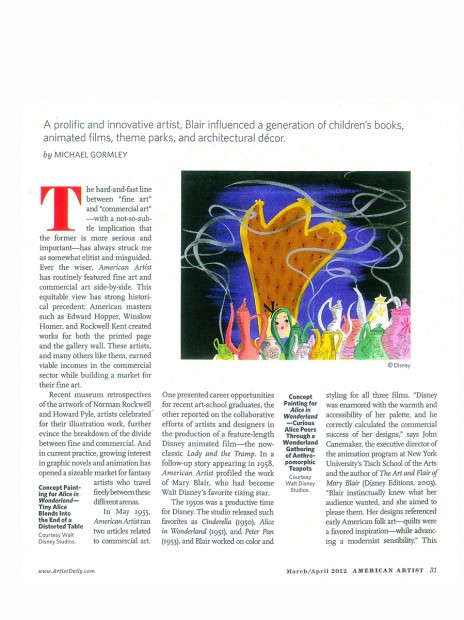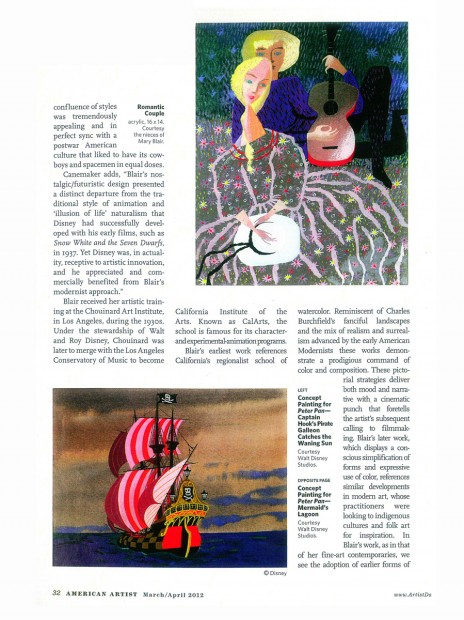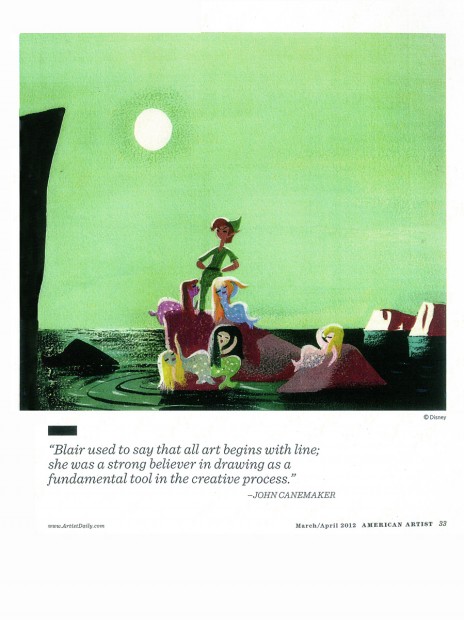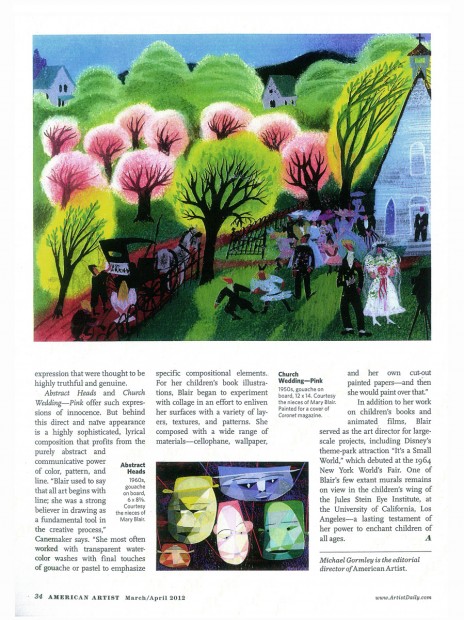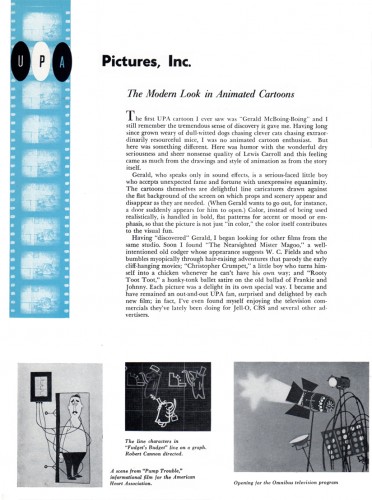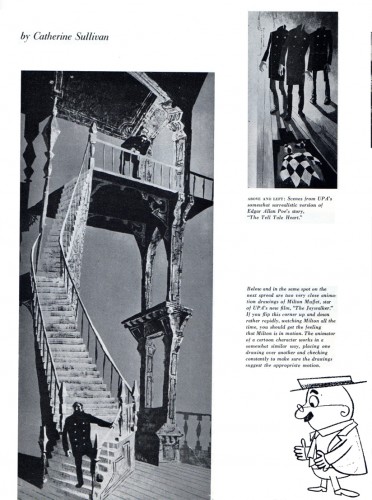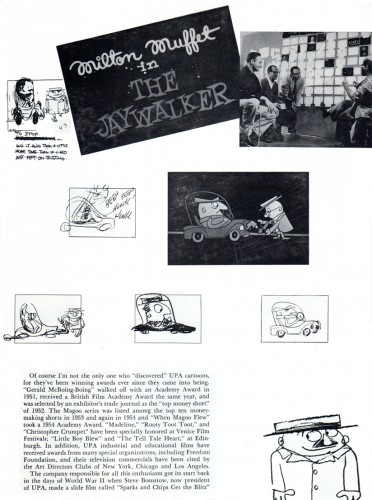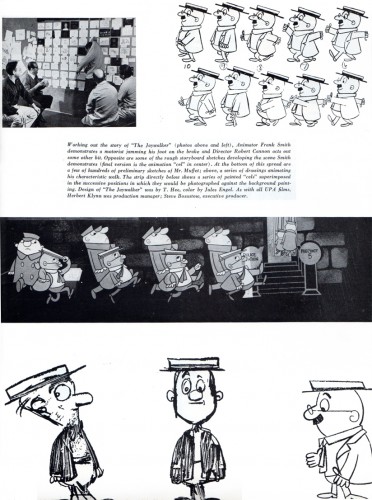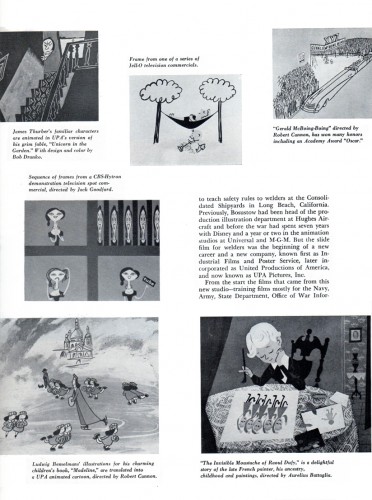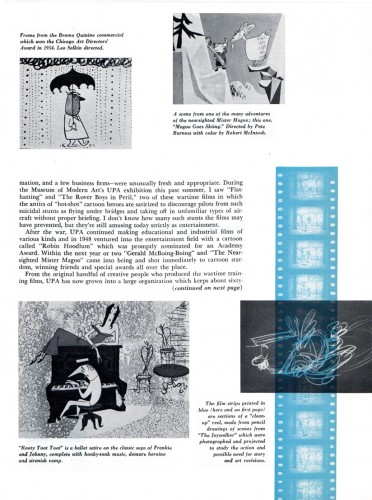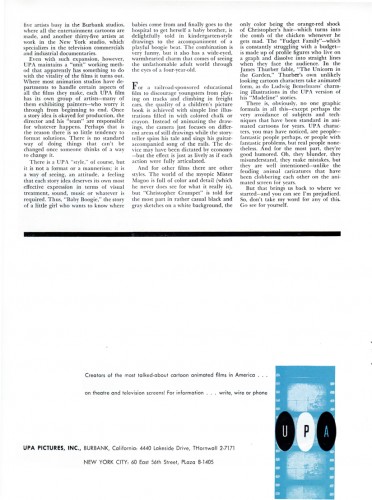Category ArchiveArticles on Animation
Articles on Animation &John Canemaker &Tissa David 27 Aug 2012 06:10 pm
Tissa – Her Animated Life
John Canemaker has an excellent article in the Tuesday edition of the Wall Street Journal. It can be found on line.
Articles on Animation &Books &Rowland B. Wilson 10 Aug 2012 03:34 am
Trade Secrets
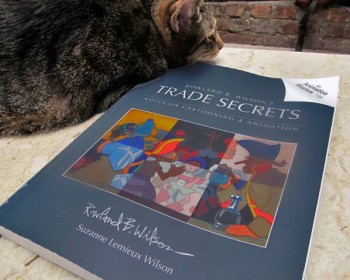 – Finally, I’ve received my copy of the book by Rowland and Suzanne Lemieux Wilson.
– Finally, I’ve received my copy of the book by Rowland and Suzanne Lemieux Wilson.
Rowland B. Wilson’s Trade Secrets / Notes on Cartooning and Animation.
I’d been waiting for this book to come to me since last April when I ordered it. With barely a few hours to scan through it, I can attest to the fact that I think it was well worth the wait. There’s so much there there.
The depth of information on every page is enormous, and just perusing the book, flipping the pages, takes time because the material within is elaborate and complicated. Yet, watching Rowland Wilson break down the information makes you realize what you already know from studying his cartoons: this guy knows a lot, and all of it goes into the choices he’s made in every cartoon.
Consequently, with the book in my hands for only a couple of days, I can’t possibly review it. It’s going to take a long bit of time. I’ll give you a couple of sample pages from the book, so you can see what you’ll be getting if you buy the book (and let me tell you, you should buy this book. It’s a gem, a masterwork of information that’s near-impossible to see collected anywhere. But it takes time.)
The book gives many and varied sheaves of information. At first, I’ve scanned a couple of pages of thoughts on character models. Here are two:
one on women:
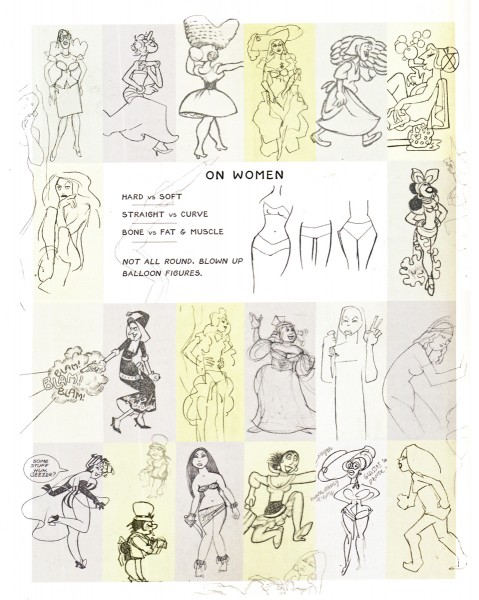 1
1and one on stocky characters:
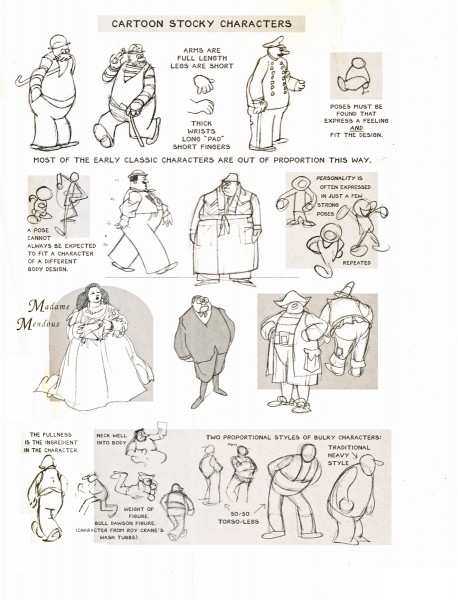 2
2When he gets into the images being created, there’s even a page about iconic imagery within the images being developed. Drawings within drawings.
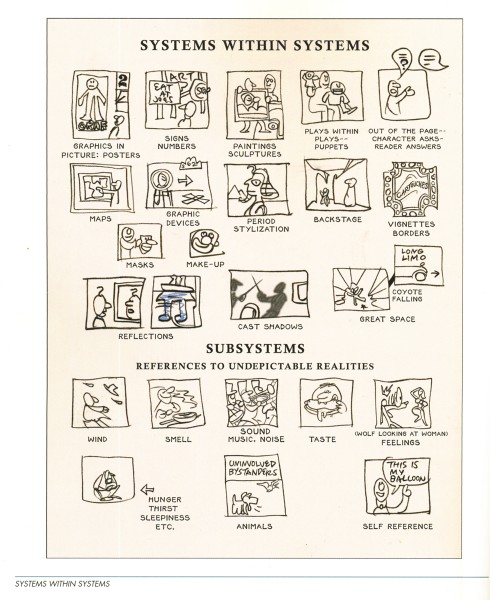 3
3Rowland gets very serious about color and color theories. Here are two adjoining pages which give an overview of color created by varying lighting systems within the drawing.
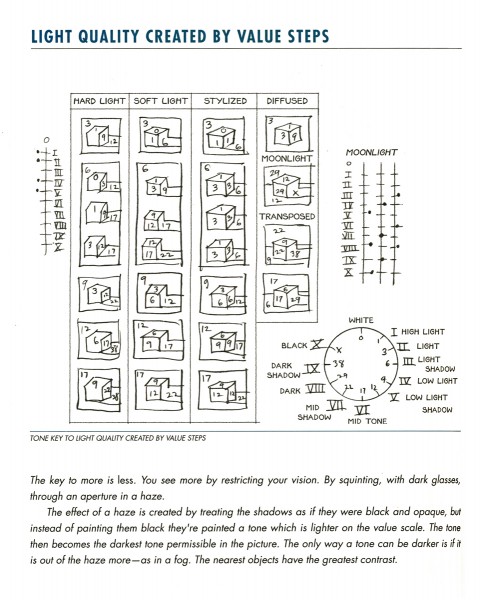 4
4
Then there is the section on notes by the great animators, Grim Natwick and Art Babbitt. This section comes from notes Rowland took at the Richard Williams studio when the two came through the London studio. There were lecture courses given for the studio, and this first page includes some caricatures done at the time.
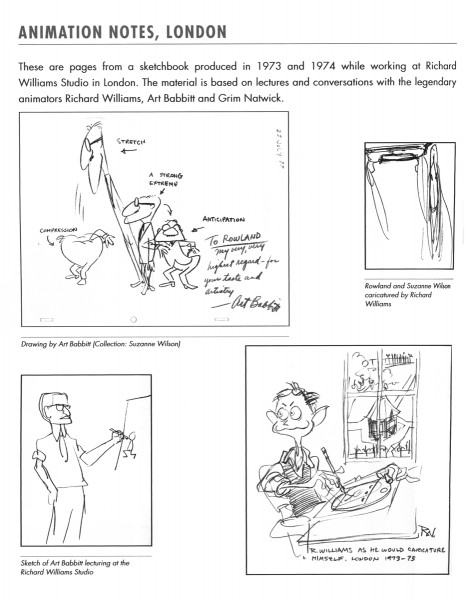 6
6Caricatures done at the Williams’ Studio in Soho Sq.
Here’s a bit of the commentary on Grim Natwick’s lessons:
- GRIM NATWICK AT RICHARD WILLIAMS STUDIO, LONDON
- Grim Natwick was considered one of the world’s greatest animators. He gave a series of talks to animators and was also available for informal conversation during this period (1973-74). We shared the same block of flats and I talked to him often at the studio and after hours. The following is a summation of these talks rearranged according to subject matter.
- GRIM AND THE TRACK— At the time Grim was here I was working on Count Pushkin Vodka (The Trans-Siberian Express animated commercial) and searching for a way to visualize dramatically a musical track. Grim placed great emphasis on the track and the importance of getting to know it thoroughly in order to draw it. At the time he was here I had not started to evolve the the theory of musical form being the basis for animation form. Although Grim never spoke of animation structure as being the same as music structure, on looking back, I see that a number of things he advocated fit into music structure. Art Babbitt’s successive breaking of joints and overlapping action is comparable to the idea of sounding a group of notes in succession, rather than simultaneously. I suspect that the best animators have worked intuitively to principles that are analogous with musical principles. Grim and Art never expressed them that way, exactly.
- DRAWING/ECONOMY— The most controversial theory of Grim’s was to set up a series of related drawings and go into them and out of them and through them in the course of a scene. The animators here felt that the system was not economical due to the amount of mental calculation it took to incorporate a pose in a new way once you had used it. They found the numbering confusing and the doping difficult. Grim presented the idea as an economy and they rejected it on that basis.
- Later in music class it occurred to me the analogy of Grim’s practice with musical practice. The practice of starting with a first and second subject, going through it, repeating it, et cetera,
- I think that Grim’s idea could be called “using a series of HOME KEYS” (animation keys] and is vindicated on aesthetic grounds if not on economic ones.
There’s plenty more where that came from.
Of course, finally, I had to copy this chapter page which includes this great self-caricature by Rowland.
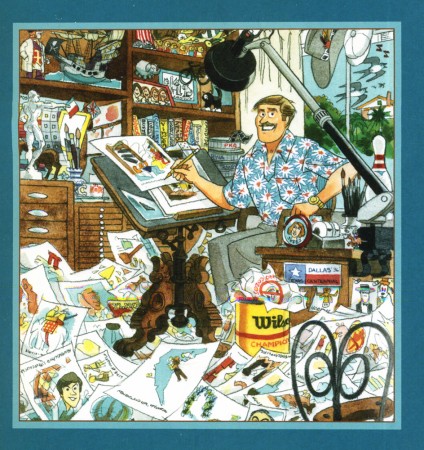
This is a book filled to overflowing with knowledge and information. It makes me realize how little I know and how much there is to learn from masters like Rowland Wilson. He talks briefly about the ad he designed/directed for Riichard Williams, Count Pushkin Vodka. Seeing this ad, alone, is enough to tell you how brilliant Mr. Wilson is and how key it is to learn from such a master. It also says a lot about the man that he spent time preparing these lessons. It also tells me how grateful I am to Suzanne Lemieux Wilson for organizing this material and getting it into shape for publication; I’m sure that was no easy task. I’ll have this book in hand for quite some time to come. In a way, it compares favorably to Richard Williams’ own book on animation, The Animator’s Survival Kit. The difference is that Williams’ book is about acting, performance, and animation; this book is about design, direction and the bigger picture.
Articles on Animation &John Canemaker &repeated posts &Tissa David 22 Jul 2012 04:46 am
Tissa – 1975
- The 1975 issue of Millimeter Magazine is an animation issue. There are a number of enormously informative articles. I was rereading a copy of the magazine, this past weekend, when I came across the Close Up section, wherein a couple of bios appear.
I’d like to show one for Tissa David that was included. I assumed John Canemaker authored the piece; there is no byline. When I asked him, he responded thus: “I wrote the article on Tissa. The quotes are from my first formal interview with her. It was for Millimeter when I was the animation editor and put together special animation issues.”
Tissa looks so young in that photo.
-
“I am a frustrated comedienne, for sure,” Tissa David will tell you, only if you ask. “I am a clown. If I weren’t shy, I’d probably be on the stage.” Instead she is an animator, one of the world’s best and busiest, and one of the few women to have reached the top in the traditionally male-dominated animated cartoon field.
She joyfully toils in her East-Side New York apartment, a warm, plant-filled place that often smells of baked apples. Classical music swirls quietly from a radio and the glow cast from the light under her animation board gives her the look of a sorceress.
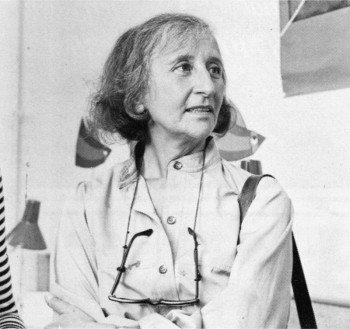 The lady has class—a fact one gathers upon first meeting, but a fact that is reaffirmed by catching a look at the creatures she is conjuring to life on her drawing board. The graphic line is strong and free, yet elegant (as is the artist); and when the drawings are flipped, the creatures move through their paces with a deliciously droll humor, a wit that is uniquely Tissa David’s.
The lady has class—a fact one gathers upon first meeting, but a fact that is reaffirmed by catching a look at the creatures she is conjuring to life on her drawing board. The graphic line is strong and free, yet elegant (as is the artist); and when the drawings are flipped, the creatures move through their paces with a deliciously droll humor, a wit that is uniquely Tissa David’s.
As a child in her native Hungary, Tissa saw Disney’s SNOW WHITE and thought (as so many others have thought after experiencing that film masterpiece), “Now this is something I want to do.” After graduating from art school, she became an assistant animator at Magyar Film Iroda in Budapest; a little more than a year later, in 1945, she was a co-owner of the Studio Mackassy and Trsi supervising all phases of production including story and camera and was sole animator of the puppet and cartoon films.
She left Hungary in 1950 during the height of the Stalin regime, and finally landed in Paris.
Jean Image Productions hired her in September 1951 and for two years she read sound tracks, planned layouts, animated, and did the entire editing of the feature-length, BONJOUR PARIS (1953). That studio closed and Tissa animated at La Comete next, a studio that had been Paul Grimault’s.
“I had absolutely no relatives outside of Hungary except in the United States. So I asked for a visa in 1950. It took at that time five years to get a visa, that was still the quota system. So I came to New York…I loved the U.P.A. cartoons. I decided I wanted to work in that studio.” In 1956, the United Productions of America’s New York Studio was the last tenant in a brownstone on Fifth Avenue and 53rd Street slated to be torn down for the construction of the 666 Tishman Building. There was a French girl in the UPA studio and so she introduced me,” Tissa recalls. “I had no sample reel. I went in once to make a sort of tryout. I was scared; I didn’t speak English, so I was just waiting, waiting, and Grim came by…Grim Natwick is the history of animation and I can rave about him. He created Betty Boop and animated the character of Snow White all the way through. UPA had an awful lot of work and they needed an assistant to Grim.”
At that initial meeting, Natwick boomed, “Now, you know what animation is!” Tissa quietly answered, “Animation is—animation.” Natwick laughed, “You can’t argue with that!” and thus began a professional partnership that lasted twelve years. “Isn’t it strange,” says Tissa today, “that SNOW WHITE got me into animation and I really learned my animation from Grim. I know a great deal about animation, I know I know, because even today I don’t do one line without something in my brain Grim told me.”
After UPA closed in 1958, Tissa and Grim freelanced as a team on countless TV commercials, and since Grim’s retirement, Tissa has soloed successfully and most notably on several John Hubley projects, i.s.: Of Demons and Men (1970), Eggs (1970), Children’s Television Workshop segments Cool Pool Fool, True Blue Sue, Truth Ruth and others, and Cockaboody (1973). Her latest animations include three CTW Letterman episodes, a scene in Shamus Culhane’s Noah’s Ark production, and over 110 feet of Hubley’s Bicentennial film, People, People, People. She has just completed some experimental animation fora Dick Williams project and is now starting, also for Hubley, a TV special based on Erik Erikson’s writings.
A description of Tissa David’s style of animation is difficult; for while it is a distillation of the Disney influence in timing, the UPA sense of humor-through-graphic-design, and the strong, poetic John Hubley mode, it also contains a different character, unique to Tissa David, that she calls the “female difference…If the same scene is animated by a man and by me, there will be a great difference, not in quality but in interpretation. John Hubley told me I have a fine sense for detail, not in the drawing itself because I make very loose drawings, but in a scene, in expressing feelings. I am a very intuitive animator—I never know when I sit down to work what will happen.”
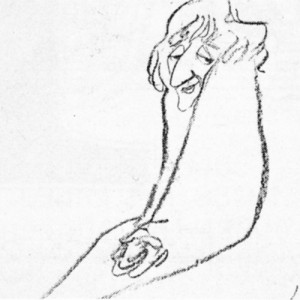 For all her gentleness, Tissa also contains an inner core of strength exhibited in her single-minded devotion to her art. Her opinions about that art, herself and other topics, is disarmingly to-the-point: “I believe very strongly that one must know how to draw,” she will offer on the subject of how-to-animate. “Even if you just animate objects, you must have a knowledge of drawing.” As for her struggles securing her place in animation, Tissa will admit, “…its very hard. Women can find work in animation if they have enough will to follow through and really do it. Even today, I’m always saying if I keep busy long enough, I will become a good animator.”
For all her gentleness, Tissa also contains an inner core of strength exhibited in her single-minded devotion to her art. Her opinions about that art, herself and other topics, is disarmingly to-the-point: “I believe very strongly that one must know how to draw,” she will offer on the subject of how-to-animate. “Even if you just animate objects, you must have a knowledge of drawing.” As for her struggles securing her place in animation, Tissa will admit, “…its very hard. Women can find work in animation if they have enough will to follow through and really do it. Even today, I’m always saying if I keep busy long enough, I will become a good animator.”
At the time this piece was written, Tissa was completing work on a pilot for Dick Williams’ film, Raggedy Ann & Andy; this one minute piece got Dick the film over Joe Oriolo and Shamus Culhane. She would thereafter work on John Hubley’s Doonsebury Special (just as he died mid film); and she was to animate for R.O.Blechman’s Simple Gifts.
Here’s a more recent photo of Tissa.
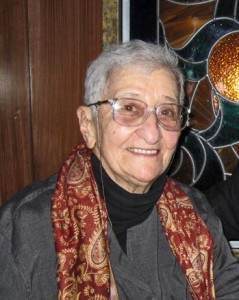
Tissa David was 91 last January.
Articles on Animation &commercial animation 10 Jul 2012 04:33 am
Gifford on Animation
- The Gifford Studio, in NYC, was one of the prime boutique shops for animation from the 50s through the 80s. The studio was formed in 1958 to service Bob and Ray who hoped to dominate the Bert & Harry Piels Brothers account. Eventually, they came to feel as though there were too many bosses, and they separated. Eventually, the studio became Kim-Gifford Studio, and they continued to operate primarily as a commercial producer for many years.
Al Eugster was the permanent/on-staff animator through many of those years. You can see more photos of him at Mark Mayerson’s vital website: Eugster’s Photo Album.
I recently found this article among Vince Cafarelli’s collection of artwork. resumably, though this article was not when Vince worked at Kim-Gifford where he did the Emily Tipp series, he was interested enough to hold onto the piece. The article is from Making Films in NY, Dec.75 issue, and thought it interesting enough to post.
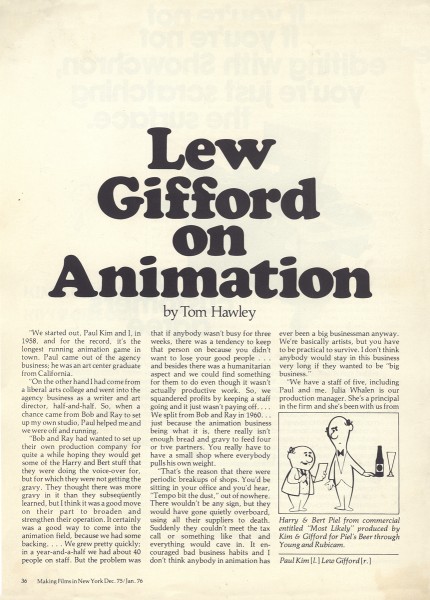 1
1
Articles on Animation &Hubley &repeated posts &Story & Storyboards 17 Jun 2012 05:15 am
Hub Boards – repost
Yesterday, I posted some comments about a recent piece on Signe Baumane‘s blog. This made me think about this piece I wrote back in 2007. I think it’s worth a repeat.
- The conversation on storyboard use goes way back – before the internet. If you check out the 1969 book by John Halas, Techniques of Film Animation, there’s a Q&A session wherein a number of animation greats were asked several questions, and the answers are given by question.
Here’s one question about storyboards and the answers given:
To what extent to you think a storyboard should be developed prior to production?
- GENE DEITCH: I believe in complete scene and shot breakdown in story-board or a thumbnail board form before production begins. I use a thumbnail storyboard as a sort of bar-sheet, indicating all effects, dialogue and music cues, scene transitions, etc. Great savings in cost, and an overall perspective of the film in advance are to be gained.
JOY BATCHELOR : As fully as possible without detriment to the following phases of production.
STEHPEN BOSUSTOW: If time and money allow, the storyboard should include as many details as possible, particularly if it is to be assigned to a large production unit. However, if only a few people are to be working on the picture, the storyboard can be quite sketchy, with the details being developed during production by the key people who have an overall feeling for and knowledge of the story.
ADRIAN WOOLERY: The storyboard is the first step, after the idea. Every problem must be solved and the story completely resolved on the board prior to consideration of any production.
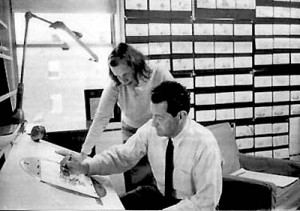 JOHN HUBLEY: It has been my experience that the more detailed a story-board and the more carefully it is designed to reflect the appearance of the finished production, the more successful the film.
JOHN HUBLEY: It has been my experience that the more detailed a story-board and the more carefully it is designed to reflect the appearance of the finished production, the more successful the film.GEOFFREY SUMNER: The storyboard, or breakdown of the film, has as many different forms as there are ways of putting actions in relation to one another.
The classic storyboard is the set of working drawings of the sequence of a film used in large studios on the Disney model where numbers of subsidiary workers must conform to a total pattern they can almost never see.
It is used in conjunction with model sheets. It could be called the “model sheet” of the sequence of the film.
It is strictly for use within a studio and should not be shown to dangerous people like sponsors.
An earlier stage is the treatment, which can be specifically directed at sponsors. If the basic idea of the film is simple, the treatment need be no more than half a dozen drawings and a brief synopsis to convey a ten minute film.
A storyboard must necessarily be constructed after the music has been done. The musician and the director can work together from a stage following the treatment. From the finished recorded track the storyboard is made.
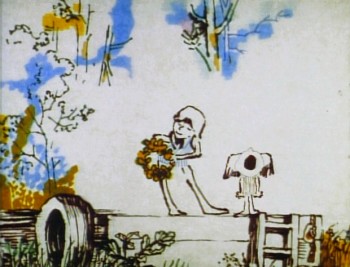 For years prior to even meeting Hubley, I had remembered his response to this question. It impressed me. His storyboard development was pretty intense. The scripts generally were done visually and tacked to the wall.
For years prior to even meeting Hubley, I had remembered his response to this question. It impressed me. His storyboard development was pretty intense. The scripts generally were done visually and tacked to the wall.
I don’t remember ever seeing text up there. John would present the board to key people, and he would give an indication of dialogue verbally. We all knew this would ultimately be ad-libbed by actors.
With the Carousel feature, sections were boarded but then developed in greater  length through improvised sessions. The boards then grew out of the edited tracks. The voices often came first, here.
length through improvised sessions. The boards then grew out of the edited tracks. The voices often came first, here.
I suspect this is probably also true of the films like Cockaboody, Windy Day and Moonbird which were dependent on the children’s verbal play at the microphone. Something like The Hole or Voyage To Next were boarded visually, then recorded improv sessions which were adapted in newer boards.
Of course it has to be remembered that the two features done within this studio, Everybody Rides The Carousel and Of Stars and Men, both started out as text. Both were heavy-duty books that were adapted for film. In the case of Of Stars and Men, the author, mathematician Harlow Shapely had major involvement in the film’s script and narrated it as well. The concepts for both films were fully worked out before anyone started boarding. So essentially a script – of sorts – existed. Since CBS financed Everybody Rides The Carousel, you know they had to approve a script.
I, of course, only remember the board.
Animation &Articles on Animation &Disney &repeated posts 14 Jun 2012 05:57 am
Marc Davis Interview
- On Tuesday, Andreas Deja posted a beautiful pair of drawings showing the transformation of Maleficent from a storyboard drawing to a Marc Davis animation drawing. The rise of draftsmanship, composition and performance was exhilarating. It reminded me of this interview with Mr. Davis which I posted back in June 2007. I’ve decided it’s a good time to post it again. Well worth rereading.
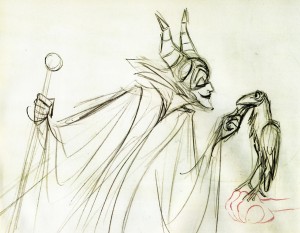 – Years ago I had a copy of a lecture that Marc Davis had given in which he compared the differences and the similarities between two characters he animated, Cruella De Vil and Maleficent. He discussed their motivations and their style of exposition. It was quite an extraordinary commentary, I’d thought, but somehow I seem to have lost that interview.
– Years ago I had a copy of a lecture that Marc Davis had given in which he compared the differences and the similarities between two characters he animated, Cruella De Vil and Maleficent. He discussed their motivations and their style of exposition. It was quite an extraordinary commentary, I’d thought, but somehow I seem to have lost that interview.
It was a great acting lesson from a great animator, and it seemed to offer depth that I haven’t found elsewhere. I’ve found myself paraphrasing from the comments Davis had made and thought to search for the document. I have found this interview that was conducted by A. Eisen for Crimmer’s: The Harvard Journal of Pictorial Fiction. This was published in 1975.
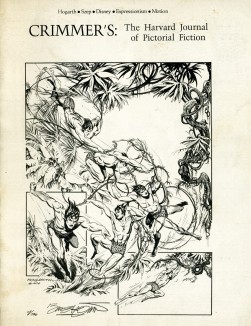 A
A 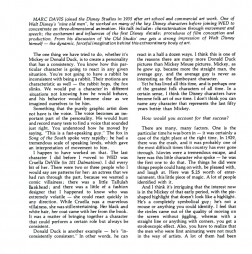 1
1
(Click any image to enlarge.)
There are other interviews with Marc Davis available. One of the best done with John Province seems to have been taken off line and now appears only in Didier Ghez‘s book, Walt’s People Vol. 1. It’s worth the book.
Animation Artifacts &Articles on Animation 08 May 2012 04:00 am
Halas in Films In Review – 1969
.
.
.
.
.- John Halas was certainly a great promoter of animation. And while doing this he also promoted himself. A very prolific writer in a time when animation was rarely mentoned, even in film magazines.
Chris Rushworth, whose site built around his collection of art from the Halas & Batchelor feature, Animal Farm, has sent me this article from Films In Review, 1969. (I used to buy this magazine, loyally, as a child for the reviews and articles about soundtrack music.)
Anyway, I thought it’d be fun to post the old article (which is obviously, pre-computer. As a matter of fact, pre video.)
.
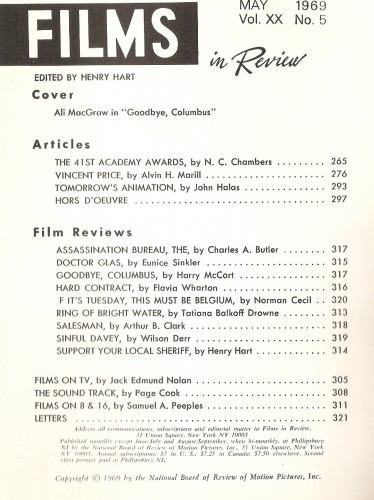
Magazine Index
Articles on Animation &Disney &Illustration &Mary Blair 03 Apr 2012 07:44 am
Mary Blair – American Artist
- The current issue of American Artist Magazine has a piece on Mary Blair’s work in Hollywood. I thought you might like to take a peek at the issue.
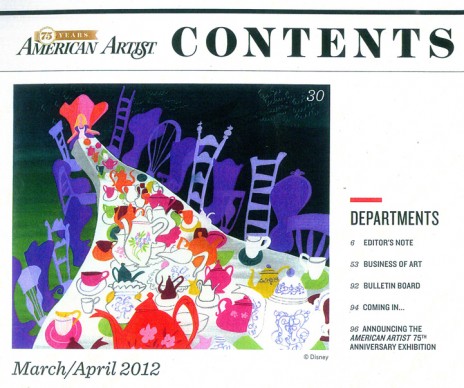
Contents page
Animation &Articles on Animation &Bill Peckmann &Books &UPA 22 Mar 2012 08:29 am
UPA brochure
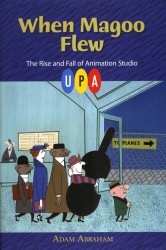
- Given the current release of the Jolly Frolics DVD that has just been released via TCM, and given the release of the new book by UPA book When Magoo Flew, by Adam Abraham, I thought this a good time to repost this brochure which seems to tie into the exhibit at the MoMA.
- Bill Peckmann sent me this brochure back in 2011. I’d not seen it before he’d sent it, so became a bit of a treasure to me, a big fan of UPA.
Here’s Bill’s note:
- This is a studio brochure/mailer* reprinted from American Artist Magazine Nov. 1955. I remember reading the article in high school, it had a huge impact. I remembered it for many years after because of the scarcity of animation articles at that time. And, because it appeared in an “art” magazine, it seemed to make “cartooning” legit.
Did Disney art ever appear in an “art” magazine around this time?
*This brochure was given to me by Ruth Mane (UPA Alumni) many, years ago.
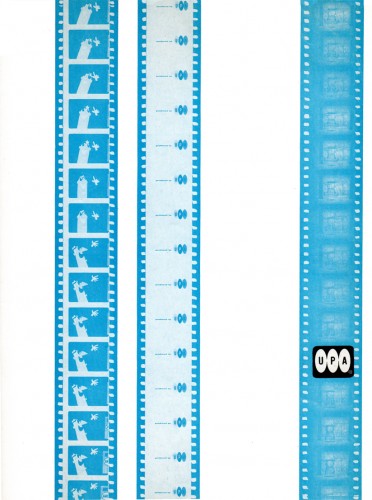 1
1(Click any image to enlarge.)
There’s no doubt this article followed up on the Museum of Modern Art‘s 1955 show of UPA art. Amid Amidi posted an extraordinary piece about this show on his Cartoon Modern site. By the way, this is an exquisite site. It’s just a shame that Amid let it lay after his promotion for his book Cartoon Modern. Take some time and browse around that site when you have some time.
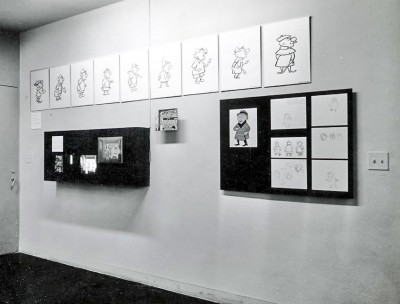
A snap of one of the walls at the 1955 MoMA UPA Exhibit.
(from Amid Amidi’s site, Cartoon Modern.)
Articles on Animation &Independent Animation &Tytla 07 Feb 2012 06:28 am
Trnka in Graphis, 1947
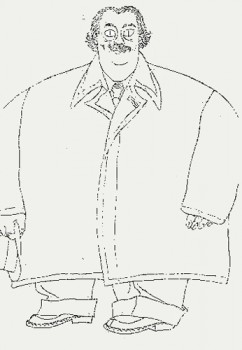 - Last week I linked to a post that Gene Deitch offered covering the Centennial of Jiřà Trnka‘s birth.
- Last week I linked to a post that Gene Deitch offered covering the Centennial of Jiřà Trnka‘s birth.
That got me to look back on some of the material I have featuring this exceptional artist. One of my favorite pieces appears in Graphis Magazine published in their 1947 edition. I’d posted this article in 2008 and am offering it again. I’d cut a few pages, which I’ve restored, and have also done a better scan of the pages.
It must be remembered that this article was published before any of the great Trnka films: The Hand, Archangel Gabriel and Mother Goose, or Midsummer’s Night Dream. Much of the piece is about his illustration work.
Regardless, it’s amazing how many beautiful images appear in his earlier films featured in this article.
(Note: Graphis is printed in three languages; all of the English is included.)
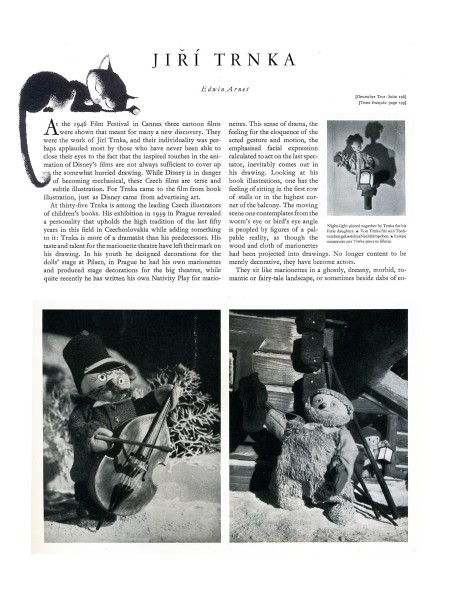 1
1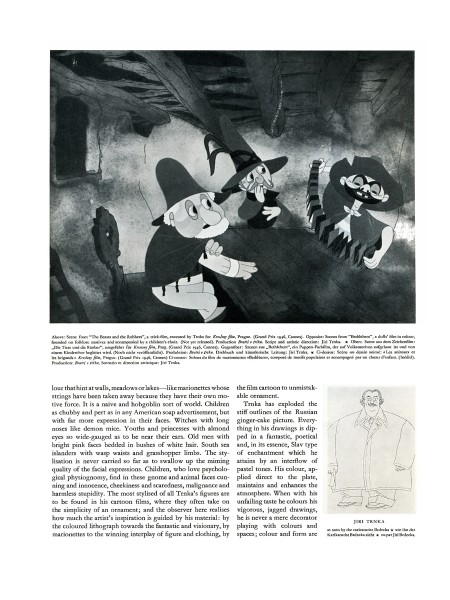 2
2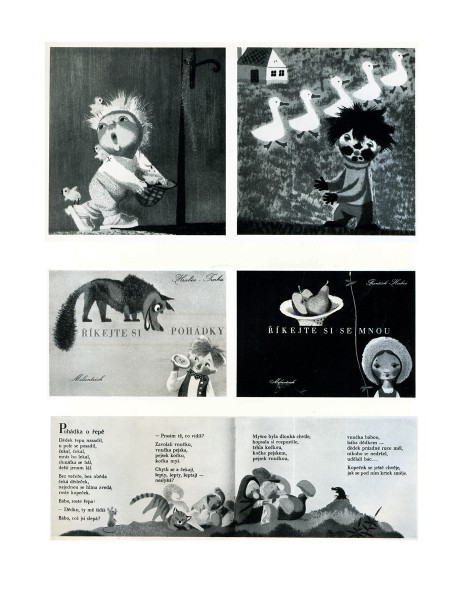 3
3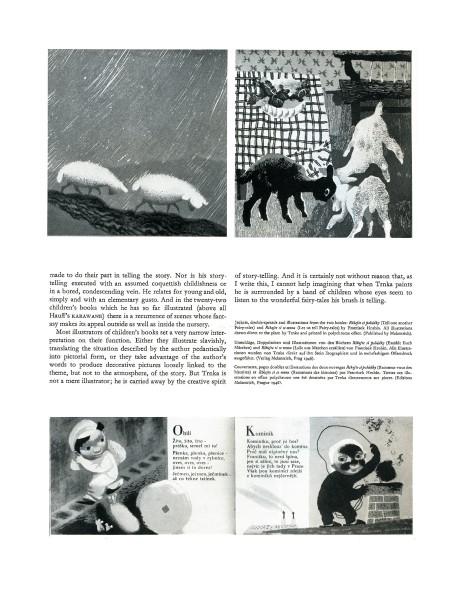 4
4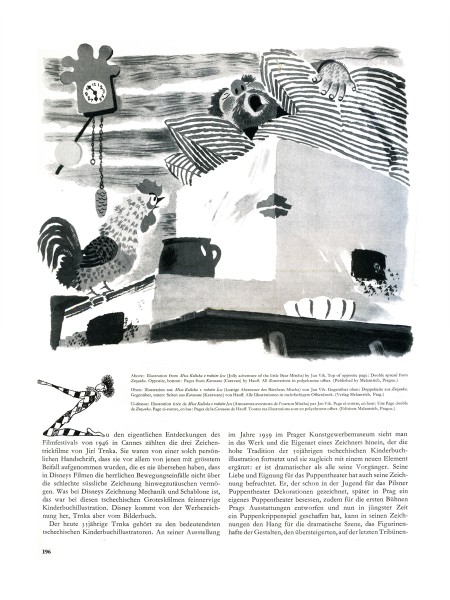 5
5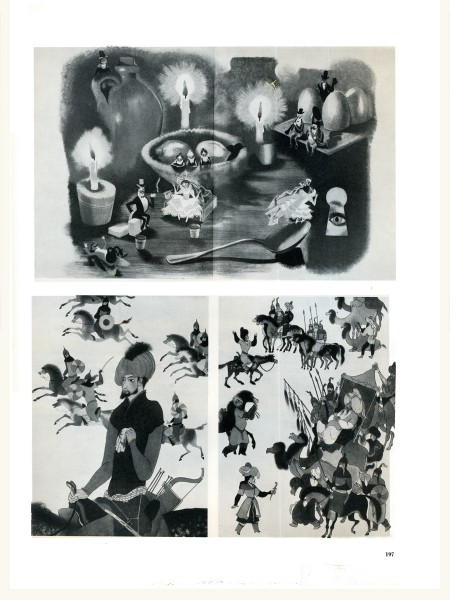 6
6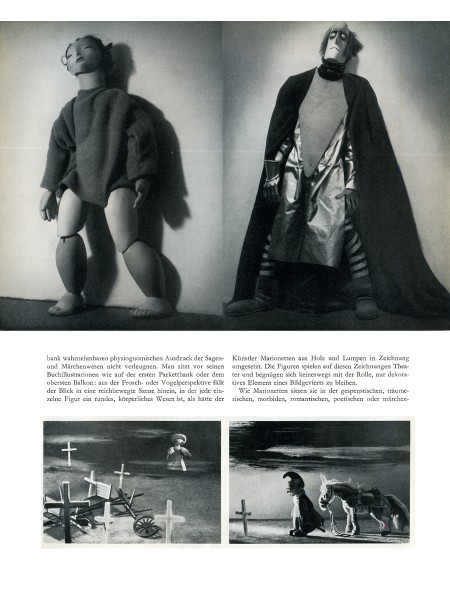 7
7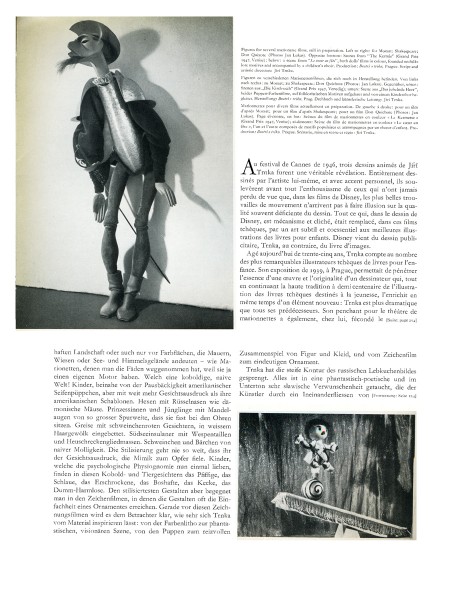 8
8
